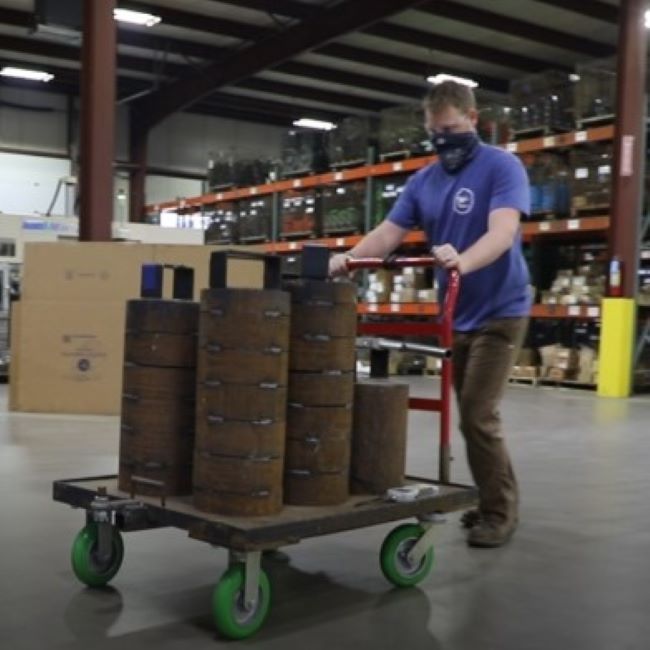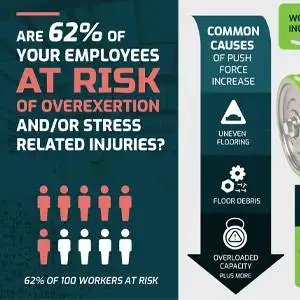

Overexertion injuries are by far the most common claims when it comes to worker’s compensation, so finding ways to reduce these types of injuries (think pushing vs. pulling) can save employers time and money.
By reducing the number of workplace injuries, you can reduce the amount of workers’ compensation claims. As well as save employees some pain and suffering. Here are some tips on the best way to move a wheeled cart to avoid workplace injuries, including an article from WebMD on how to push and pull safely.
 Many employees can be tempted to pull a cart behind them rather than push it ahead of them. Unfortunately, this can cause significant injury.
Many employees can be tempted to pull a cart behind them rather than push it ahead of them. Unfortunately, this can cause significant injury.
When pulling a cart, you cannot see where you are going if you’re walking backward. And because of the cart’s weight, pulling it can put undue stress on the shoulders and back. What’s more, the cart can keep rolling after you have stopped, which can cause it to collide into you.
Pushing a cart, not only will you be able to see where you are going, you’ll also put less pressure on your shoulders and back. The main reason to push rather than pull is you can apply more force; you are leaning your body into the cart and making the work easier by distributing more of the force of the weight.

These steps and tips are designed to ensure that you (or your employees) are moving loaded wheel carts appropriately to avoid injury. Knowing how to physically push the cart and ensuring that you have the right caster wheels for the job can save countless thousands of dollars, improve your production, and even improve employee morale. For more ergonomic tips and cost savings, call your Caster Concepts representative at 517.680.7950.